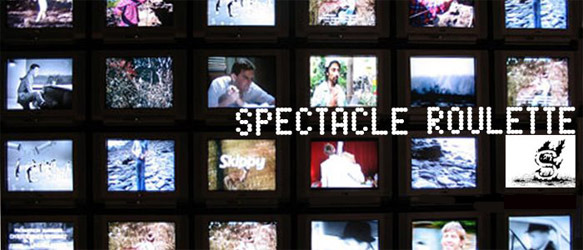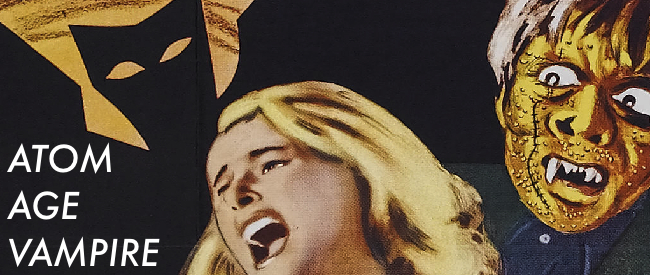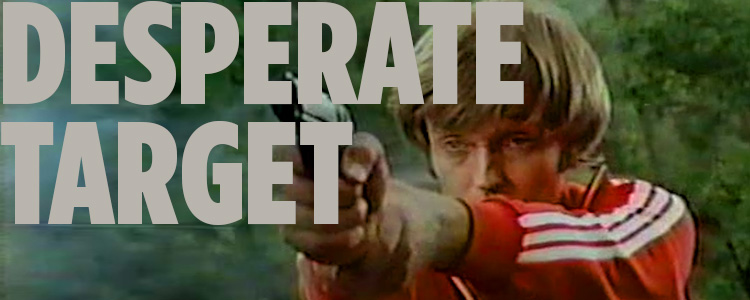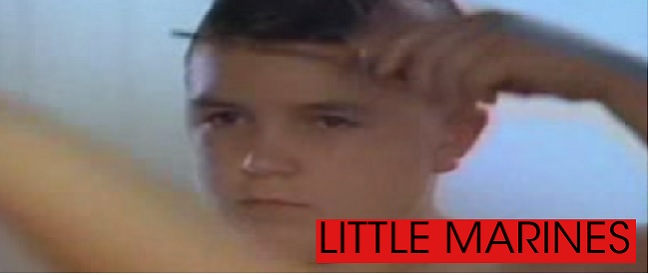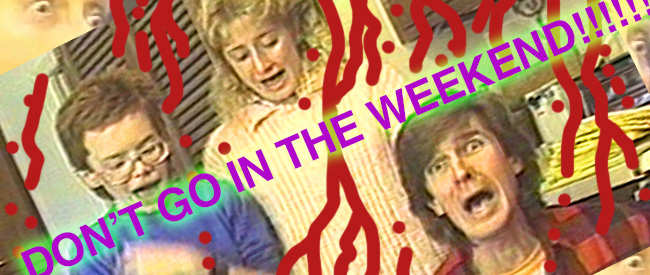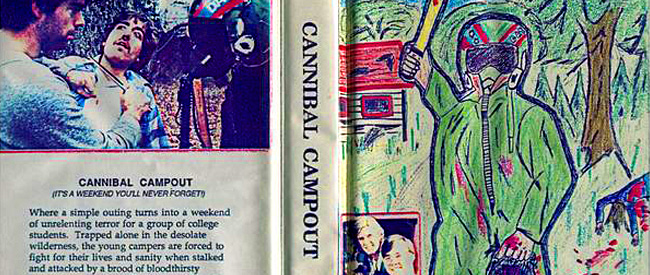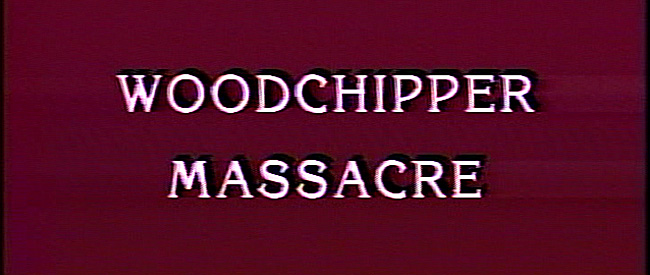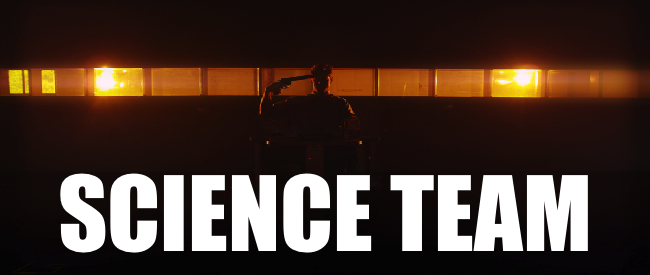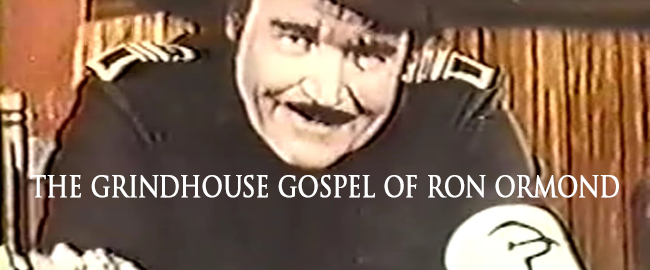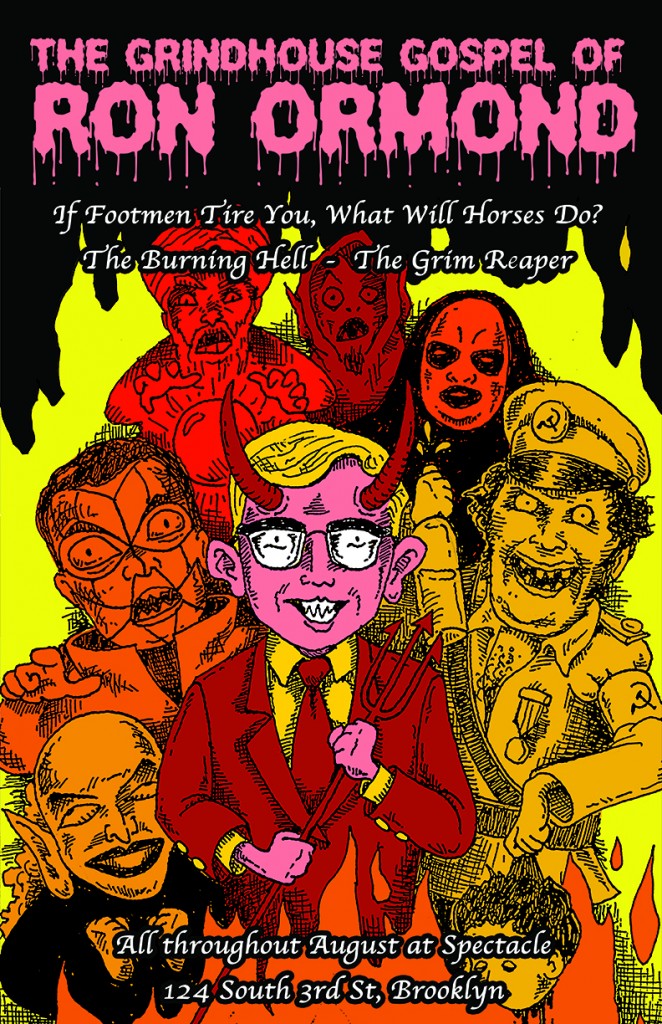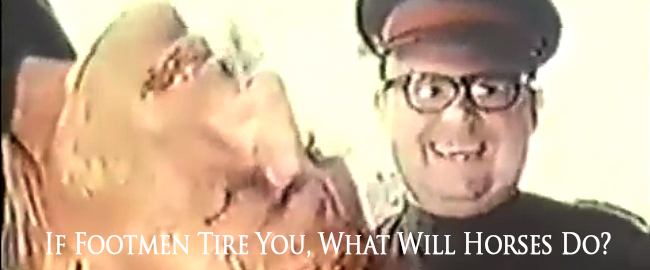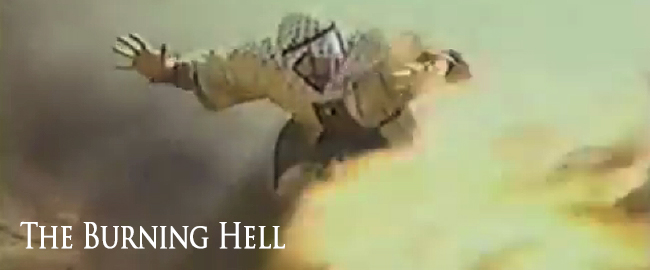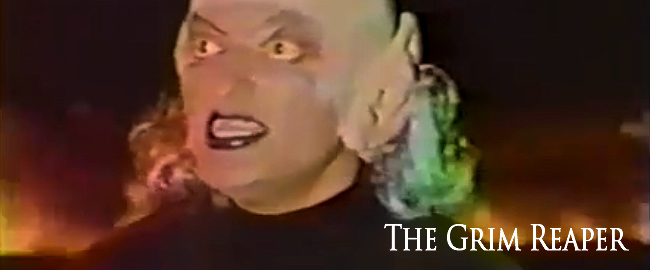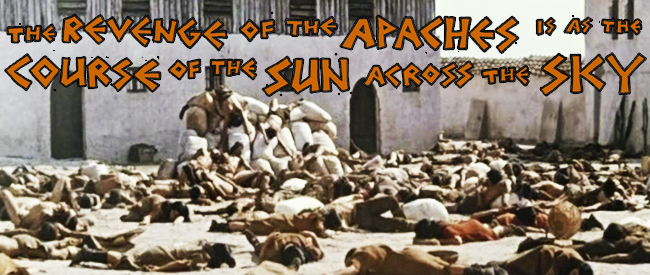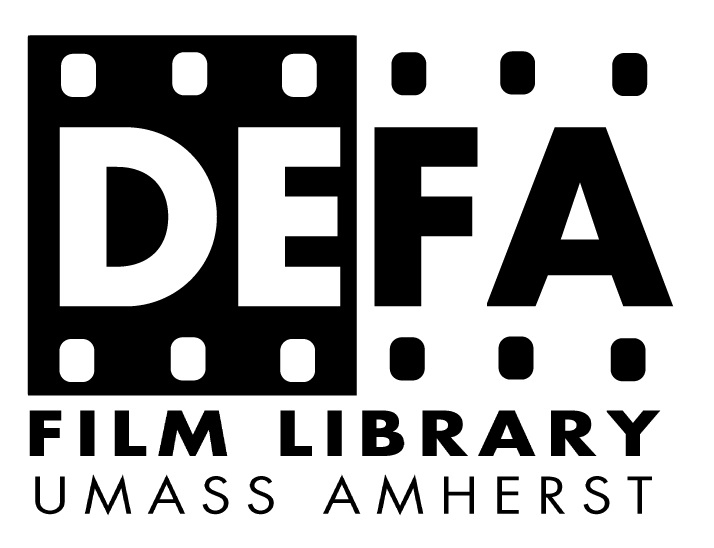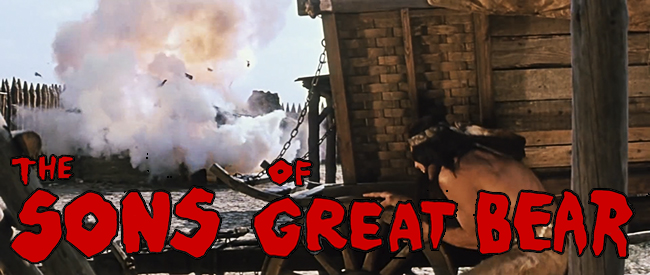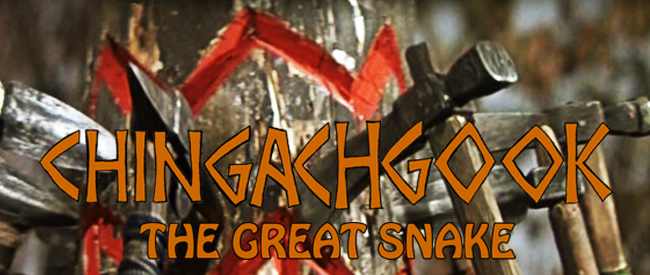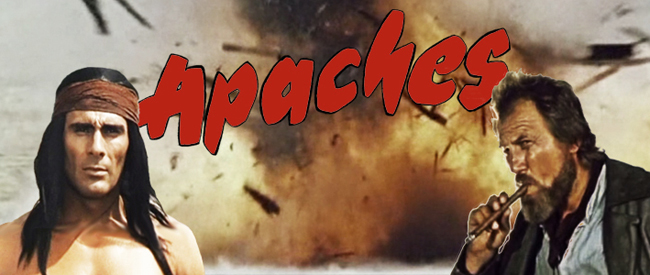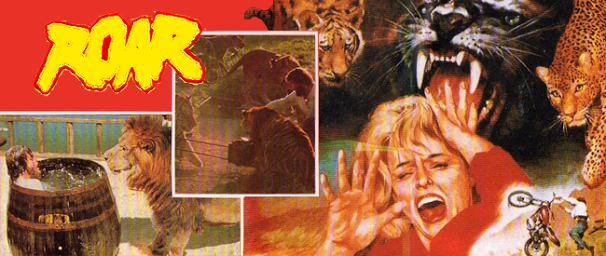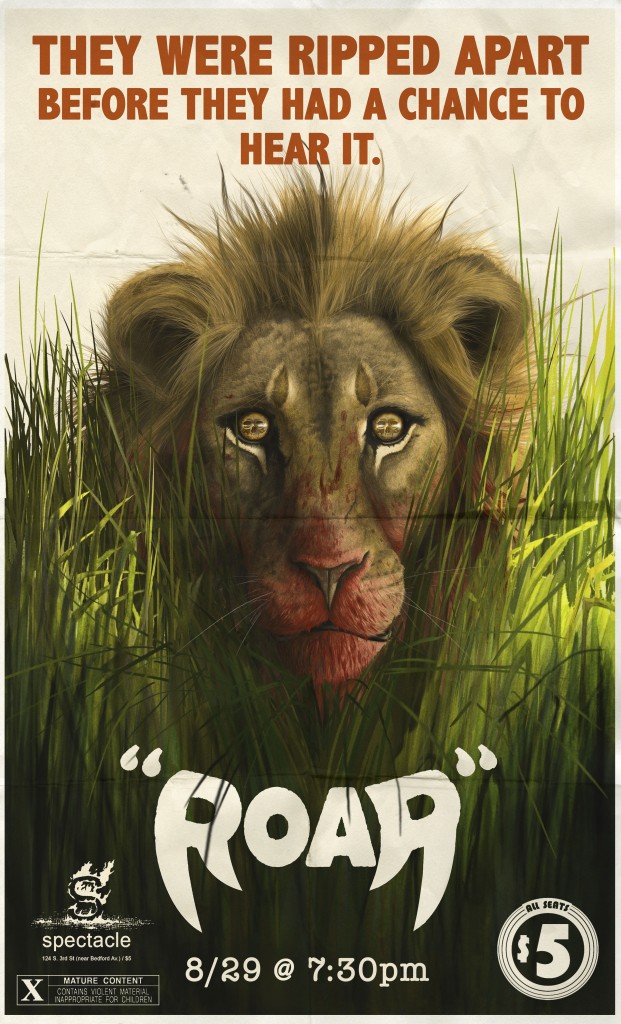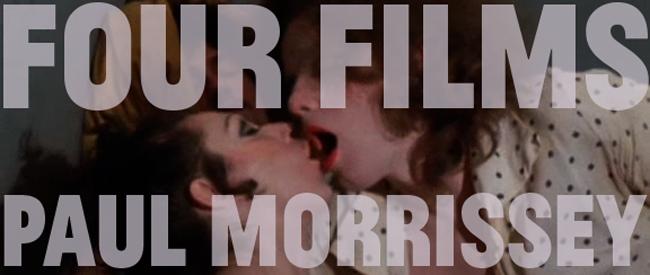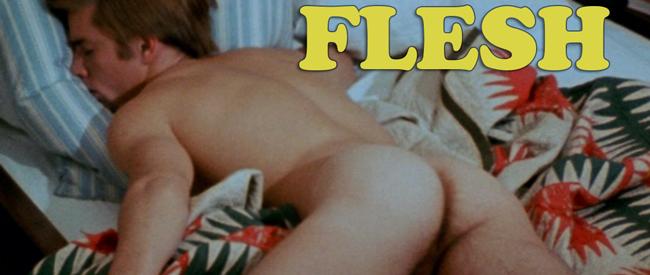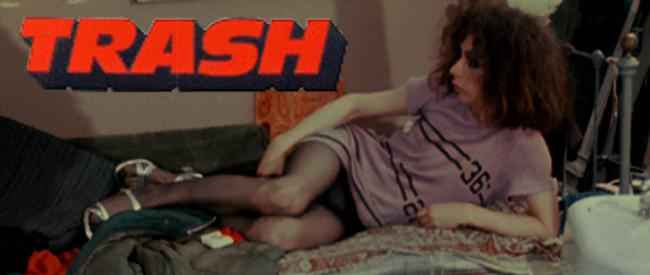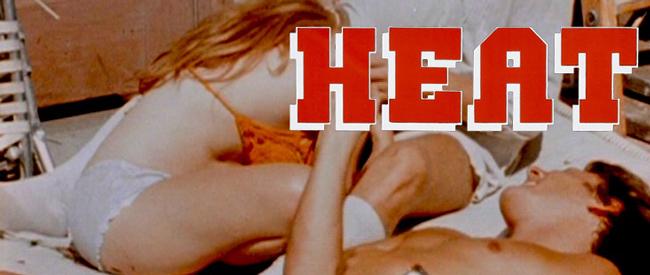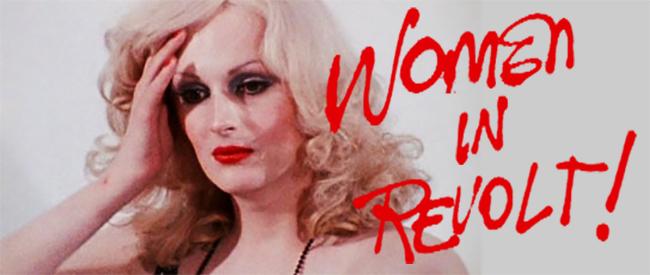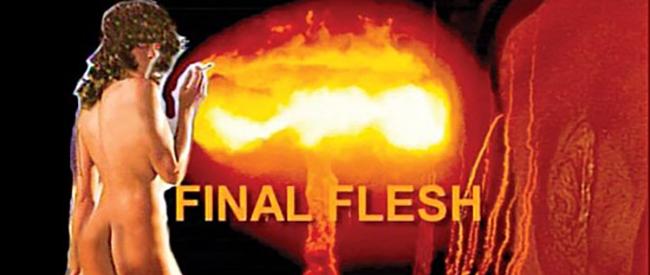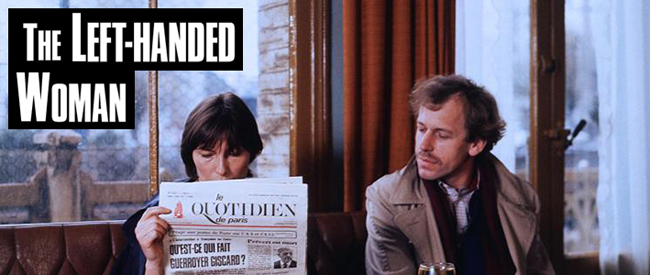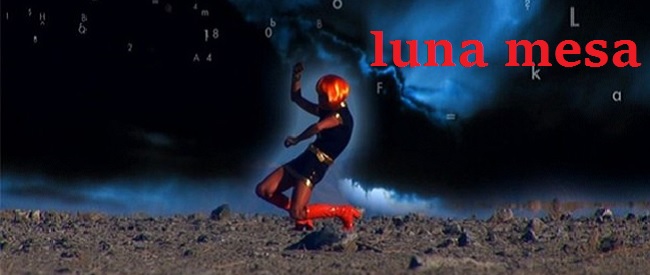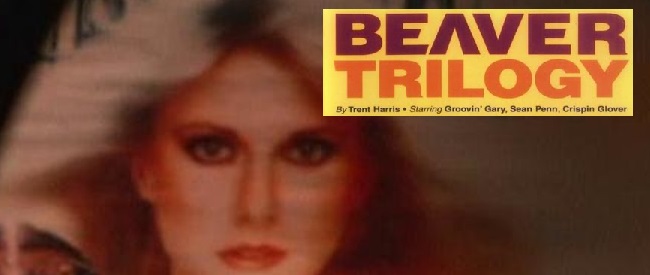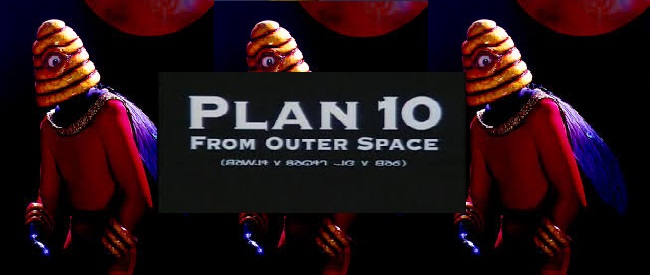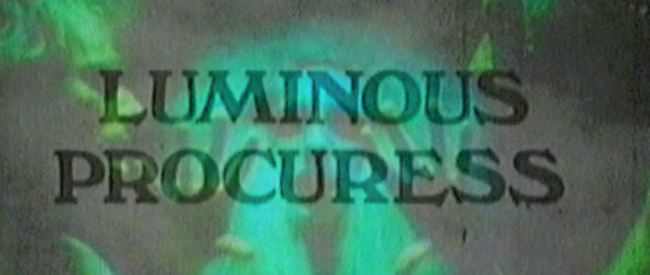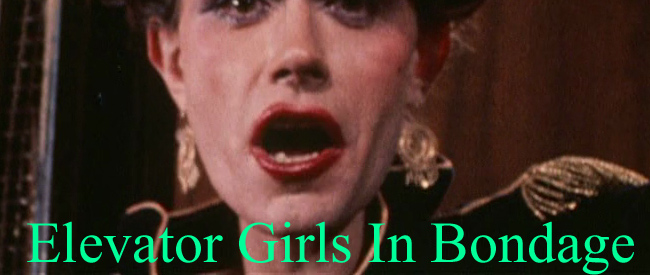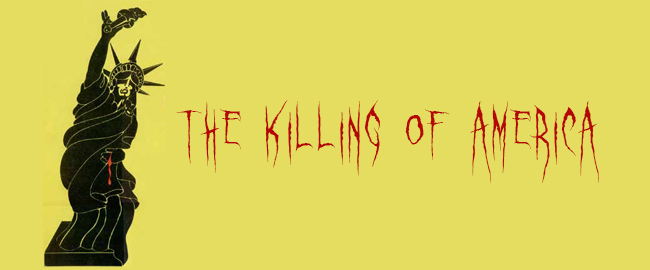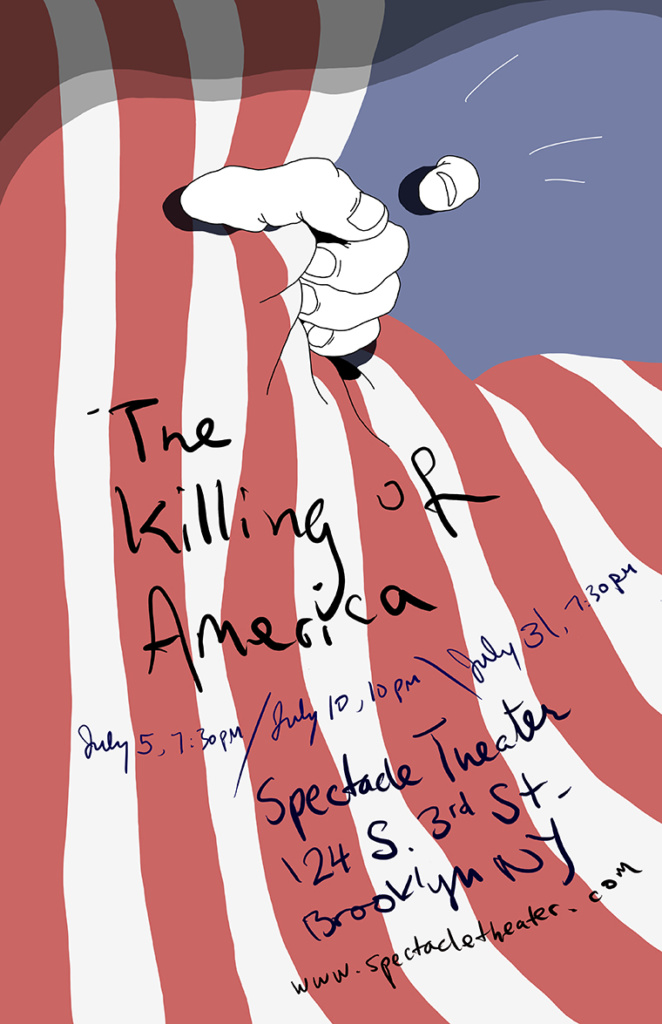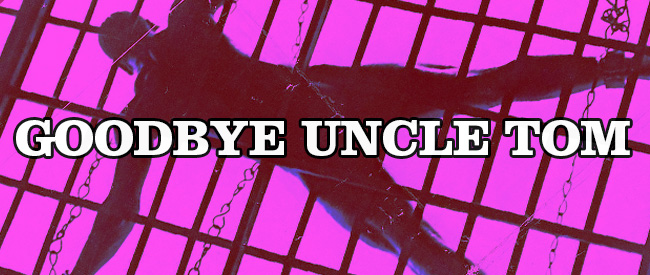FRIDAY, AUGUST 1: SPECTACLE ROULETTE
SATURDAY, AUGUST 2: ATOM AGE VAMPIRE
FRIDAY, AUGUST 8: TROMA’S HORROR BOOBS
SATURDAY, AUGUST 9: THE FOREST
FRIDAY, AUGUST 15: DESPERATE TARGET
SATURDAY, AUGUST 16: LITTLE MARINES
FRIDAY, AUGUST 22 & SATURDAY, AUGUST 23: DON’T GO IN THE WEEKEND – CANNIBAL CAMPOUT / WOODCHIPPER MASSACRE
FRIDAY, AUGUST 29: SCIENCE TEAM
SPECTACLE ROULETTE
Dir. ???, 19??/20??.
????. ??? min.
In any number of languages.
FRIDAY, AUGUST 1 – MIDNIGHT
Once again it’s time to spin the chamber! What are we going to show?
Cooking shows hosted by puppets from Iceland? Italian dancefighting epics? Hologramsploitation? Hostage situation bloopers? Dog Wedding Massacre? Open heart surgery? Prison slime fights?
Well, that’s up to you.
The first 6 people to show up with a movie will be given the chance to lobby by showing 5 minutes of that film. After all 6 are shown, everyone votes and that’s what we watch!
If you want to participate, please do the following:
1. Show up at least 15 minutes BEFORE midnight with your proposed film. (Either a DVD or digital copy!)
2. Be prepared to introduce your 5 minute clip and lobby hard for your candidate.
3. COME CORRECT. Bring the craziest thing you can find, no half-steps!
4. Tell your friends!
ATOM AGE VAMPIRE
(aka Seddok, l’erede di Satana)
Dir. Anton Giulio Majano, 1960
Italy, 87 min.
Dubbed in English
SATURDAY, AUGUST 2 – MIDNIGHT
From the annals of public domain comes a tale of shocking science gone awry, a damsel in distress, and ***SPOILER ALERT*** absolutely no vampires.
Yes, 1960’s ATOM AGE VAMPIRE – originally released in Italy as SEDDOK, L’EDREDE DI SATANA – contains no vampires whatsoever.
Instead – a beautiful singer is horribly disfigured in a car accident and opts for a very unusual treatment. Under the care of the crazed Dr. Levin, she agrees to be injected with an experimental serum designed to restore her beauty. However, during the course of the treatments, Dr. Levin falls madly in love with her and as the serum gradually fails and her beauty deteriorates in front of him – he vows to go to any length to get it back, no matter how dastardly.
Spectacle will be screening this beast from the LOONIC VIDEO VHS, the way God intended.
TROMA HORROR BOOBS
dir. John Brennan
USA, 80 mins
Spectacle’s favorite perverts are back at it again! This time Horror Boobs have teamed up with America’s oldest independent movie studio, Troma! A union defined by an appreciation for exposed flesh on film. Their mission: to bring you the breast nude scenes from the depths the Troma catalog!
Honestly with titles like THE TOXIC AVENGER, TERROR FIRMER and SGT. KABUKI MAN NYPD, it wasn’t very hard for the HB Crew to stuff this video mix to the max! We’re talking about the bare bosoms of Michelle Bauer, Julie Strain, Debbie Rochon, Carmen Electra’s Body Double and many, many more! With guest appearances by Kevin Costner, Trey Parker, Ted Raimi, Ron Jeremy, and Lloyd Kaufman.
Come experience horror & boobs of all sizes on the big screen. Seriously what more could you ask for? Penises. Well you never know, Lloyd Kaufman is involved, and you know how he likes his penises.
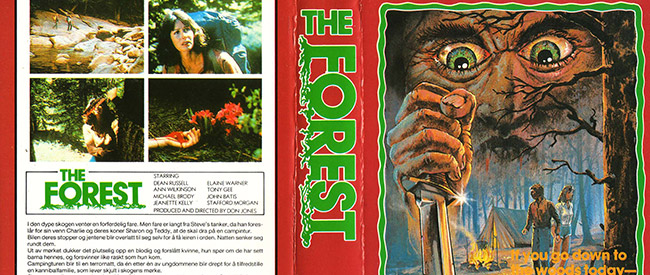
THE FOREST
Dir. Don Jones, 1982
USA. 85 min.
SATURDAY, AUGUST 9 – MIDNIGHT
DESPERATE TARGET
Dir. George Vieira, 1980
USA, 90 min.
FRIDAY, AUGUST 16 – MIDNIGHT
Starring Christopher Mitchum
“A Russian scientist who discovers the formula for a new synthetic fuel becomes the ‘Desperate Target’ of a group of desperate men.”
LITTLE MARINES
Dir. A.J. Hixon, 1991
USA, 87 min.
SATURDAY, AUGUST 16 – MIDNIGHT
Awkwardly shot like a pervert peaking on these kids in the woods, A.J. Hixon’s LITTLE MARINES is the story of three turds that go camping. It’s not really an adventure film since it is mostly just a series of mishaps and fuck-ups and offers no resolutions to these kids problems. Most famous for its really long shaving scene featured at the Found Footage Film Festival, LITTLE MARINES has many more precious moments including bizarre flashbacks to their friend who died of cancer, a cool dude that tries to give them a handful of joints, a not so cool dude that is probably a child molester, a bully that has a gun, and a moment when the fatty admits that his father never said he loved him and the fatty’s friends say nothing. Its what you can expect from good ol’ Christian entertainment.
For this screening, the Spectacle will be screening the VHS tape that features the original music they probably couldn’t get the rights to when it came out on DVD!
Spectacle & Alternative Cinema present:
DON’T GO IN THE WEEKEND!
CANNIBAL CAMPOUT – FRIDAY, AUGUST 22 – MIDNIGHT
WOODCHIPPER MASSACRE – SATURDAY, AUGUST 23 – MIDNIGHT
GHASTLY SHOT ON VIDEO GORE (AND A LITTLE BIT OF SINGING) DEEP IN THE WOODS! NO ONE IS SAFE! DON’T SAY WE DIDN’T WARN YOU!!!!
Alternative Cinema/Camp Motion Pictures website: alternativecinema.com
CANNIBAL CAMPOUT
dir. Tom Fisher/Jon McBride, 1988
89 mins, USA
In English
FRIDAY, AUGUST 22 – MIDNIGHT
CANNIBAL CAMPOUT (1988) is the tender and terrifying tale of a band of man-eating maniacs. Desperate to survive, the deranged orphans honor a deathbed promise to dearly departed mother never to eat junk food again. Instead, they work up frenzied appetites that will only be satisfied by the taste of young flesh. When Amy and her college friends arrive for a fun-filled weekend of camping in the desolate wilderness, they quickly learn the horrors of being on the wrong end of the food chain. Only brutal murder, torture and mutilation await as one by one they are stalked and terrorized by this brood of bloodthirsty mountain dwellers who will stop at nothing to appease their hunger for sliced, diced and barbecued camper.
“I love this movie…perhaps it’s the completely tasteless ending that was so sickening that I couldn’t help but enjoy it enormously”. – DeadLantern.com
“…the grossest scenes this side of H.G. Lewis… will probably repulse even the staunchest vidiot.” – Fangoria Magazine
WOODCHIPPER MASSACRE
dir. Jon McBride, 1989
90 mins, USA
In English.
SATURDAY, AUGUST 23 – MIDNIGHT
It’s The Brady Kids meets the Texas Chainsaw Massacre in this heartwarming, stomach-churning tale of a not so typical American family that unexpectedly finds itself caught up in a web of death, deceit and dismemberment. And what better way for this trio of demented siblings to discard of fresh human remains than turn it into garden variety mulch…by way of the biggest woodchipper ever to chop’n’grind a grown man into ground meat. In this family, blood really is thicker than water.
SCIENCE TEAM
Dir. Drew Bolduc, 2014
82 min, USA
FRIDAY, AUGUST 29 – MIDNIGHT
Way back in October of 2011 at the first annual Spectacle Shriek Show, we played host to a film called THE TAINT directed by Drew Bolduc & Dan Nelson. THE TAINT polarized not only the audience at the event but mired many of the Spectacle programmers in weeks of lengthy email chains leaving the film right on the tip of everyone’s brain long after the screening was over. Now, Bolduc has returned to the directors chair for SCIENCE TEAM and we couldn’t be more excited.
SCIENCE TEAM is a completely independent sci-fi feature length motion picture produced and shot in Richmond, Virginia. The film was partially funded by crowd-sourcing through Indiegogo and is a great example of how high-quality films can be created with a micro-budget.
When Chip returns home to visit his beloved mother, he finds himself caught in the middle of an interstellar war between a telepathic space alien and a bureaucratic government organization bent on incinerating all alien life. Chip must fight to survive this ego-shattering drama of epic proportions.

